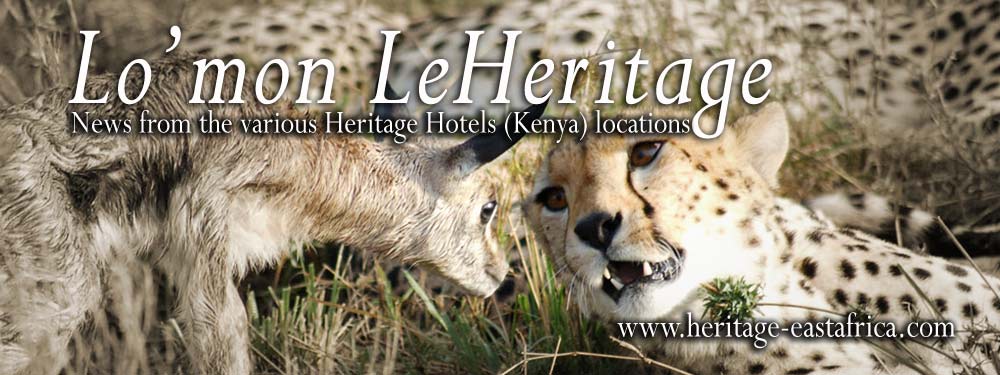As you'll see in our previous post, Mara Big Cats in April, the long grass affects how cheetahs hunt. As one of the most vulnerable cat (facing extinction due to dwindling habitats, competition for prey from other bigger cats/predators, lack of a big gene pool, climate, etc), cheetahs are fighting a battle for survival.
Cheetah Facts:
✓ The word "cheetah" is derived from the Sanskrit word citrakāyaḥ, meaning "variegated body".
✓ The cheetah is the fastest land mammal, reaching up to speeds of 120kph (75 mph).
✓ A cheetah can accelerate from 0 to 110 km/h in 3 seconds, but cannot sustain that speed for very long, otherwise it's brain would heat up excessively and cause permanent brain damage!
✓ Adults weight between 40 - 65 kgs.
✓ They have distinct 'tear marks' running from the corner of the eyes down the sides of the nose to the mouth to ward-off bright sunlight from the eyes and to aid in hunting and seeing long distances.
✓ Their total body length is from 115 to 135 cm (45 to 53 in), while the tail can measure up to 84 cm (33 in) in length. They use their tails for 'steering' - changing course in full flight while hunting.
✓ Like most cats, cheetahs can purr as they inhale, but cannot roar like lions or tigers.
✓ Cheetahs are not adaptive to new habitats, and are an endangered species. They once roamed Africa and Asia, but are now found in small pockets in Africa, and souther western Asia.
✓ The gestation period is 90 - 98 days, and they give bath to a litter of up to nine cabs. Cubs leave their mother between thirteen and twenty months after birth.
✓ The life span is up to twelve years in the wild, and about twenty if in captivity.
✓ They are carnivores, eating small prey like Thomson's gazelles, impala, hares and young wildebeest. They are fussy eaters, and will not eat sickly animals or animals they have not killed themselves (as seen in this footage)!
This famous band is fondly referred to as "the three brothers", and are stars in BBC's Big Cat Diary Series, which is short in the locality of Mara Intrepids. They have caught a young wildebeest, which seems to be injured.
He seems to have picked up an injury, possibly due the hazardous crossing. The three brothers are unsure – they only eat prime!
Finally they leave him alone, and in fact choose to hang out. They discuss his travels from distant lands and the family that has left him at their mercy..
✓ Last but not least, cheetahs are not known to climb trees - but trust us to get rare footage! This happens when grass in the savannah is tall, and they want to watch out for their enemies, who are the other big cats, hyenas, buffalos or elephants.
On a regular game drive, our Assitant Chief Guide at Mara Intrepids, DC (Dixon Chelule) came across this collector's item.
Mother cheetah hiding her cubs in the long grass..

But she is not comfortable. She is wary of attacks from hyenas, lions, leopards or buffalo.

So she opts to go up a tree to scan the horizons

She looks this way

and that..

Mommy, I want to see too..Sonny scampers up the tree

I've seen enough, coast is clear..
And here's a video of the whole fam up the tree.
Book and pay for two nights at Mara Intrepids (online) and get the third free! This offer is valid till June on a first-come-first-serve basis, and subject to availability. http://www.heritage-eastafrica.com/specials/3-for-2-safari-special/
Admin, Lo'mon LeHeritage; Pictures DC (Dixon Chelule) Assitant Chief Guide at Mara Intrepids,
(Lo'mon is Samburu for news; Le Heritage means from Heritage)
















